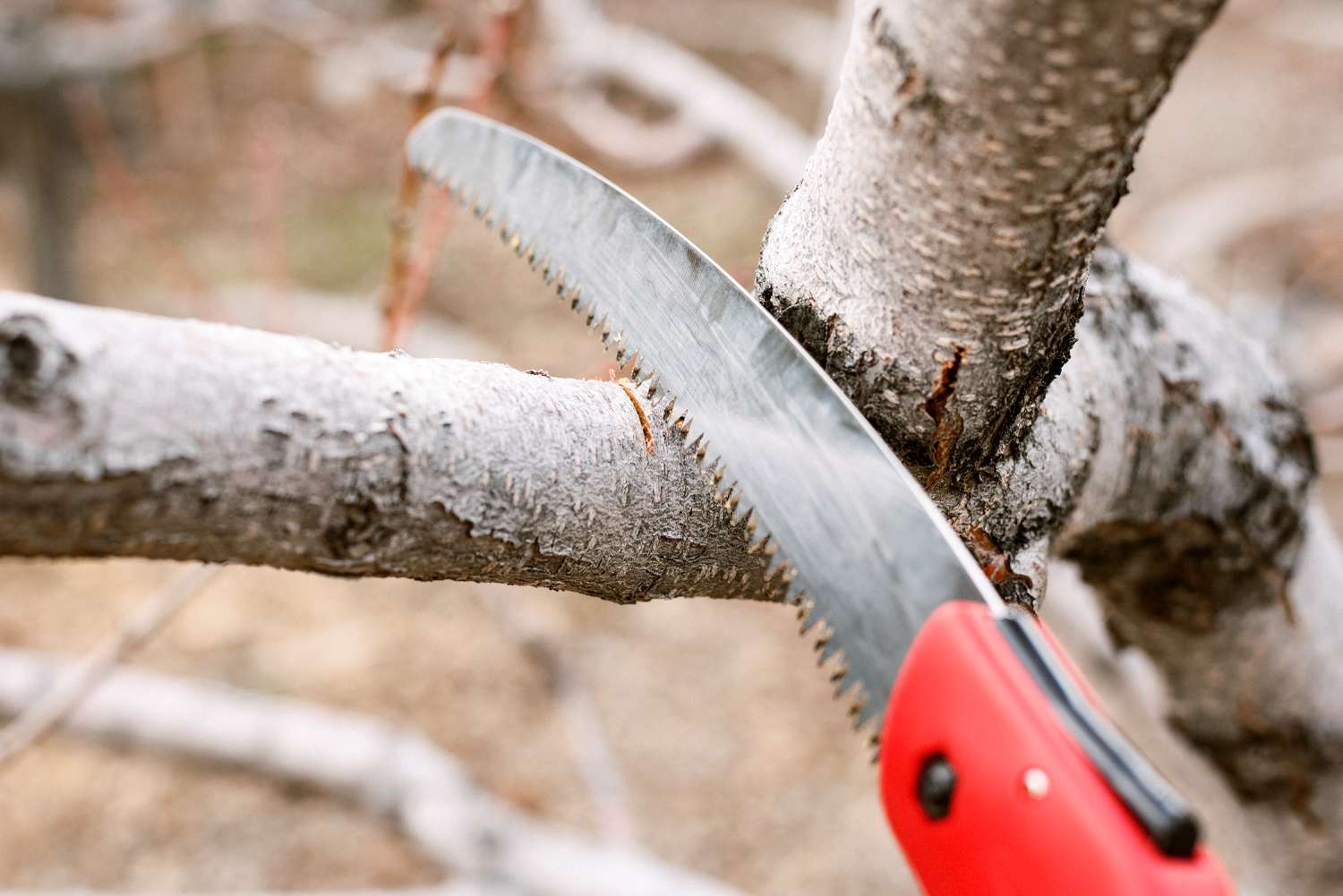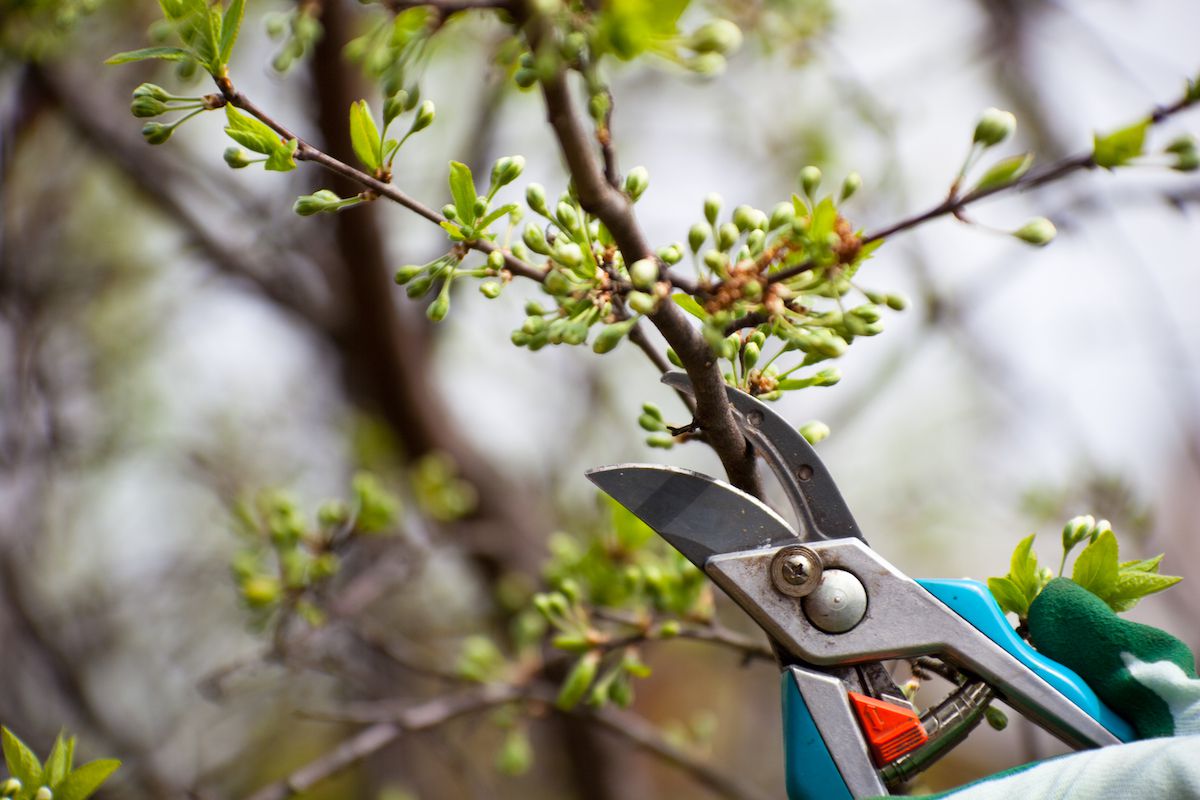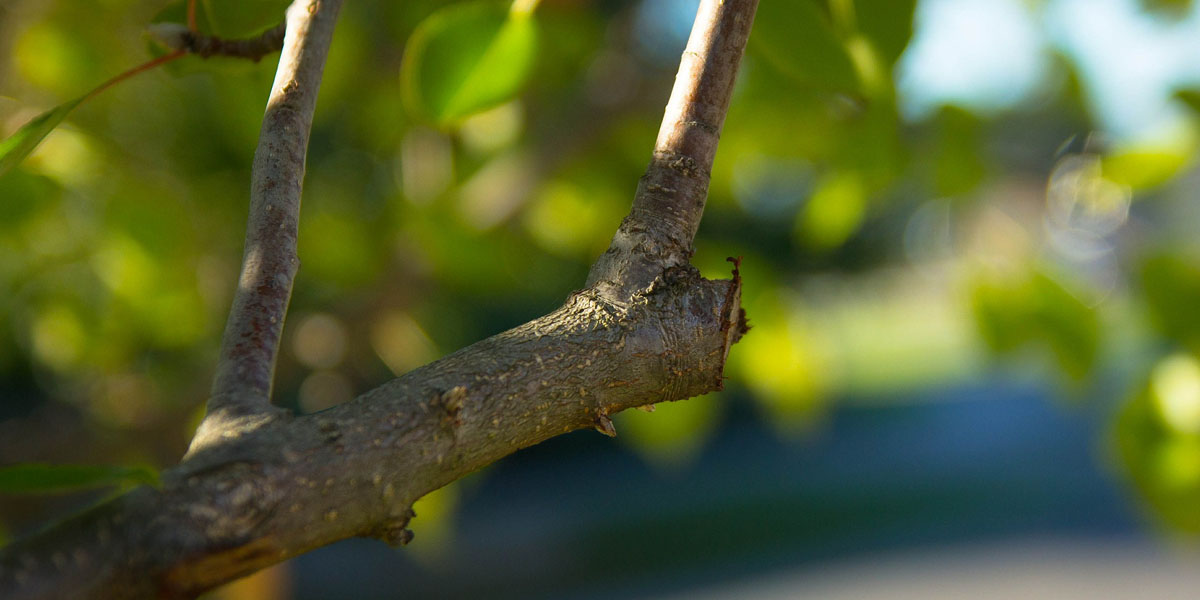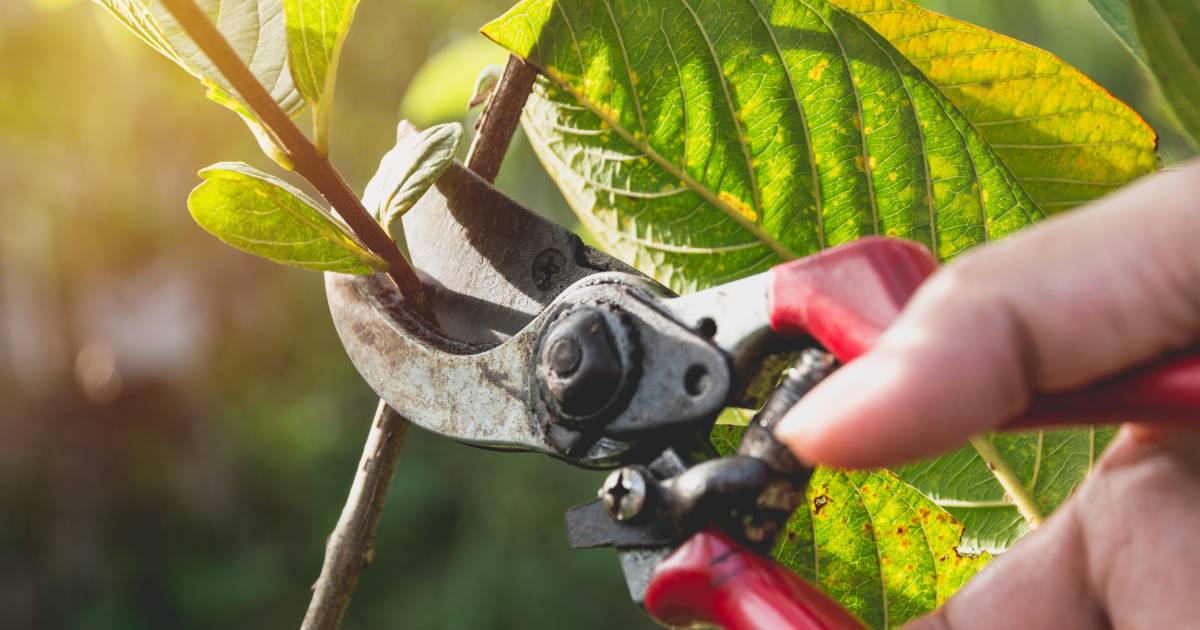Home>Gardening Basics>Tools and Equipment>What Are The Best Pruning Shears
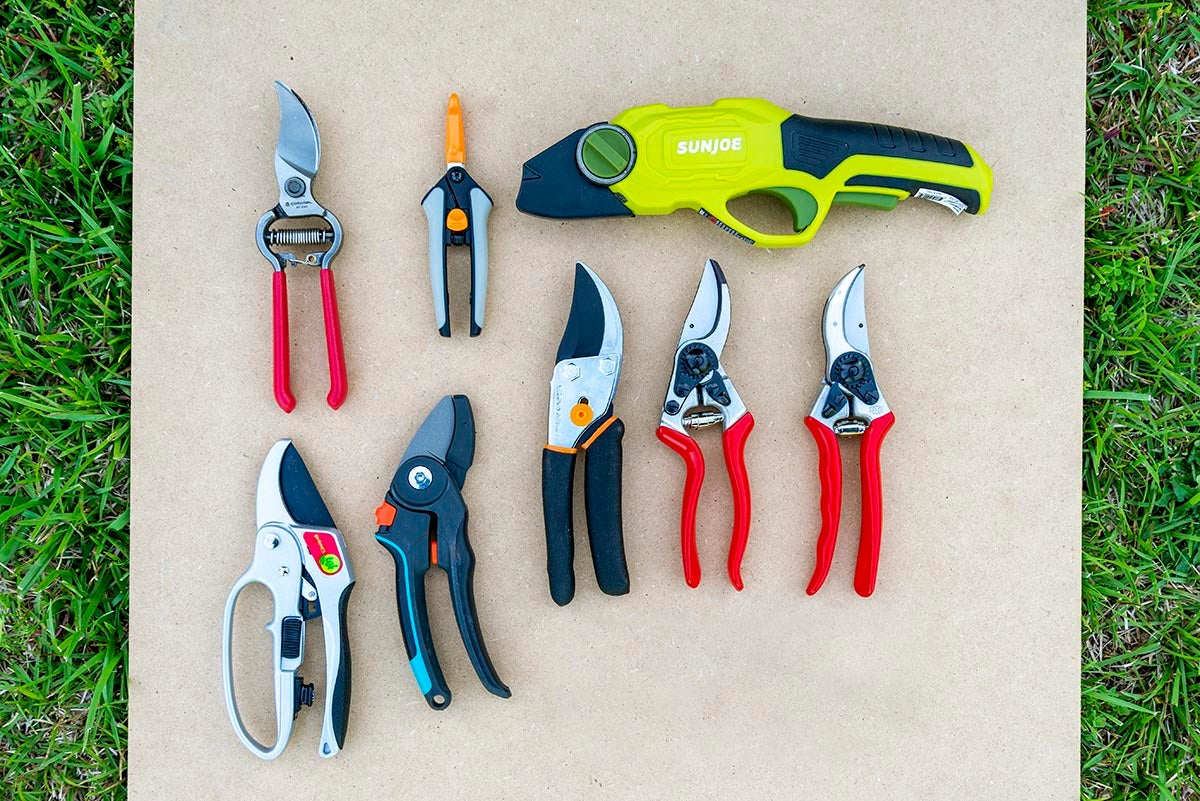

Tools and Equipment
What Are The Best Pruning Shears
Modified: January 22, 2024
Looking for the best pruning shears? Discover top-rated tools and equipment for all your gardening needs. Enhance your pruning skills with the right tools.
(Many of the links in this article redirect to a specific reviewed product. Your purchase of these products through affiliate links helps to generate commission for Chicagolandgardening.com, at no extra cost. Learn more)
Table of Contents
- Introduction
- Factors to Consider When Choosing Pruning Shears
- Bypass vs Anvil Pruning Shears: Which is Better?
- Top 5 Pruning Shears in the Market
- Model A: Features and Benefits
- Model B: Features and Benefits
- Model C: Features and Benefits
- Model D: Features and Benefits
- Model E: Features and Benefits
- How to Properly Prune Plants with Pruning Shears
- Tips for Maintaining and Sharpening Pruning Shears
- Conclusion
Introduction
Pruning shears are an essential tool for any gardener or landscaper. Whether you have a small backyard garden or a large orchard, pruning shears can help you maintain the health and appearance of your plants. These versatile tools are designed for trimming, shaping, and cutting small branches and stems, making them indispensable for a wide range of tasks.
When it comes to choosing the best pruning shears, there are several factors to consider. The type of pruning shears, the quality of the blades, the handle design, and the overall durability are all important aspects to keep in mind. Understanding the different types of pruning shears available on the market and their unique features can help you make an informed decision.
There are two main types of pruning shears: bypass shears and anvil shears. Bypass shears have a scissor-like design where the two blades pass by each other to make a clean cut. This type of shears is ideal for precise and clean cuts on live branches. On the other hand, anvil shears have a straight blade that cuts against a flat surface, which is suitable for cutting dead wood or tough branches.
In this article, we will explore the various factors to consider when choosing pruning shears, the differences between bypass and anvil shears, and the top 5 pruning shears available in the market. Additionally, we will provide helpful tips on how to properly prune plants and maintain and sharpen your pruning shears to ensure their longevity and efficiency.
So, whether you are a seasoned gardener or just getting started, this article will serve as a comprehensive guide to help you find the best pruning shears for your gardening needs.
Factors to Consider When Choosing Pruning Shears
When it comes to selecting the right pruning shears for your gardening needs, there are several factors that you should take into consideration. These factors will help you determine which pruning shears will best suit your requirements and ensure that you make an informed decision. Here are the key factors to consider:
- Type of Pruning Shears: As mentioned earlier, there are two main types of pruning shears: bypass and anvil shears. Bypass shears are generally preferred for their clean and precise cuts, making them ideal for live branches. On the other hand, anvil shears are better suited for cutting dead wood or tough branches. Consider the type of pruning work you will be doing to choose the right type of shears.
- Blade Quality: The quality of the blades is critical when it comes to pruning shears. Look for blades that are made of high-quality materials such as hardened steel or carbon steel. These blades are durable, sharp, and resistant to rust and corrosion, ensuring that they will last for a long time.
- Handle Design: The handle design plays an important role in the comfort and ease of use of the pruning shears. Look for shears with ergonomic handles that are comfortable to hold and provide a good grip. Handles with cushioned or non-slip grips are especially beneficial, as they reduce hand and wrist fatigue during prolonged use.
- Size and Weight: Consider the size and weight of the pruning shears, as it can impact your ability to maneuver and control the tool. If you have smaller hands or prefer a lightweight option, look for compact and lightweight shears that are easy to handle. However, keep in mind that larger shears may offer more cutting power for thicker branches.
- Overall Durability: It is important to choose pruning shears that are built to last. Look for shears with sturdy construction, durable materials, and a reliable locking mechanism to ensure that they can withstand regular use and tough pruning tasks without breaking or wearing out.
By considering these factors, you can narrow down your options and select the pruning shears that best match your gardening needs and preferences. Taking the time to choose the right shears will greatly enhance your pruning experience and help you achieve optimal results.
Bypass vs Anvil Pruning Shears: Which is Better?
When it comes to pruning shears, one of the key decisions you’ll need to make is whether to choose bypass shears or anvil shears. Understanding the differences between these two types can help you determine which is better suited for your specific pruning tasks. Let’s take a closer look at bypass and anvil pruning shears:
Bypass Pruning Shears: Bypass shears are designed with a scissor-like cutting action, where one blade slides past the other to make a clean and precise cut. This design allows bypass shears to deliver a smooth and gentle cut, making them ideal for live branches. The bypass cutting action is especially useful for maintaining the overall health of plants, as it minimizes damage and promotes proper healing.
Anvil Pruning Shears: Anvil shears, on the other hand, have a straight blade that cuts against a flat surface or “anvil”. This design creates a crushing action, making them more suitable for cutting dead wood or tough branches. The anvil design provides greater cutting power and can tackle thicker branches with ease. However, due to the crushing action, anvil shears can sometimes leave a less clean cut compared to bypass shears.
So, which type is better? It depends on the specific pruning task at hand. Bypass shears are recommended for tasks that involve live branches, delicate plants, or precision cuts. The clean cut produced by bypass shears helps maintain the health of plants by reducing the risk of infection or disease. Anvil shears, on the other hand, excel at cutting through tougher materials and are more suitable for tasks involving dead wood or thick branches.
It’s important to note that both bypass and anvil pruning shears have their own advantages and limitations. For most gardeners, having a combination of both types in their tool arsenal is ideal. This allows you to tackle a wide range of pruning tasks effectively. By having both bypass and anvil shears, you can ensure that you have the right tool for the job and achieve the best results.
Ultimately, the choice between bypass and anvil pruning shears comes down to the specific pruning tasks you will be performing. Consider the type of plants you have, the thickness of branches you need to cut, and the level of precision required. By understanding the differences between bypass and anvil shears, you can make an informed decision and select the pruning shears that will best meet your needs.
Top 5 Pruning Shears in the Market
With so many options available, it can be overwhelming to choose the best pruning shears for your gardening needs. To help you in your search, we have compiled a list of the top 5 pruning shears in the market. These shears have earned rave reviews from customers and are known for their quality, durability, and performance. Let’s dive into the details:
- Model A: Model A pruning shears are renowned for their sharp blades and ergonomic handle design. The high-quality carbon steel blades ensure clean cuts, while the comfortable grip minimizes hand fatigue during extended use. These shears also feature a reliable locking mechanism for safe storage. With excellent precision and durability, Model A is a top choice for both amateur and professional gardeners.
- Model B: Featuring a bypass design, Model B pruning shears are ideal for precise cuts on live branches. The stainless steel blades offer superior sharpness and durability. The non-slip grips and lightweight construction provide ease and comfort during use. Model B also includes a sap groove for preventing sticking, making it a versatile and reliable option for all your pruning needs.
- Model C: Known for its exceptional cutting performance, Model C pruning shears feature a high-carbon steel blade for effortless trimming. The spring-loaded mechanism ensures smooth action, making pruning a breeze. The ergonomically designed handle with a cushioned grip provides comfort and reduces strain on your hands. With durable construction and precision cutting, Model C is a popular choice among professional gardeners and landscapers.
- Model D: If you’re looking for versatility, Model D pruning shears are a top contender. These shears feature a 2-in-1 design, with interchangeable blades for both bypass and anvil cutting. This allows you to tackle a wide range of pruning tasks with ease. The blades are made from high-quality steel for long-lasting performance, and the ergonomic handles ensure a comfortable grip. Model D is a reliable choice for gardeners who require flexibility and efficiency in their pruning tools.
- Model E: Designed for heavy-duty pruning, Model E pruning shears are built to withstand tough challenges. With high carbon steel blades and a sturdy anvil design, these shears can effortlessly cut through thick branches and dead wood. The ergonomic handles with non-slip grips provide comfort and control during pruning sessions. Model E is a reliable option for commercial landscapers and those who frequently engage in demanding pruning tasks.
Each of these pruning shears offers unique features and benefits, so choose the one that aligns with your specific pruning needs, preferences, and budget. Remember, investing in high-quality pruning shears will make your gardening tasks more efficient and enjoyable, ensuring that your plants stay healthy and well-maintained.
Model A: Features and Benefits
When it comes to reliable and efficient pruning shears, Model A stands out as a top contender. This pruning shear model offers a range of features and benefits that make it a favored choice among gardeners. Let’s explore the key features and benefits of Model A:
Sharp Blades: Model A pruning shears are equipped with sharp and durable carbon steel blades. These blades ensure precise and clean cuts, allowing you to trim branches with ease and precision. The sharpness of the blades also minimizes the risk of damaging the plants or causing unnecessary stress.
Ergonomic Handle Design: The handle design of Model A prioritizes user comfort. The ergonomic shape provides a comfortable grip and minimizes hand strain during prolonged pruning sessions. Additionally, the handle features a non-slip grip, ensuring a secure hold even in wet or sweaty conditions.
Locking Mechanism: Model A comes with a reliable locking mechanism that keeps the shears securely closed when not in use. This feature ensures safe storage and prevents accidental openings, reducing the risk of injury. The locking mechanism also allows for convenient one-handed operation, offering convenience and ease of use.
Durability: Built with high-quality materials, Model A is designed to withstand rigorous pruning tasks. The sturdy construction ensures that these pruning shears can withstand regular use without compromising their performance. This durability ensures that Model A will be a long-lasting tool in your gardening arsenal.
Versatility: Model A is versatile and suitable for various pruning tasks. Whether you’re trimming small branches, shaping bushes, or maintaining your flower beds, Model A offers the versatility to handle different pruning needs. The precise cutting action and durable blades make it a reliable companion for a wide range of gardening projects.
Overall, Model A pruning shears are a reliable tool for any gardener. With sharp blades, an ergonomic handle design, a secure locking mechanism, durability, and versatility, Model A is well-equipped to handle all your pruning needs. By choosing Model A, you can enjoy an effortless and enjoyable pruning experience while maintaining the health and appearance of your plants.
Model B: Features and Benefits
When it comes to reliability and precision, Model B pruning shears are an excellent choice. With a range of impressive features, Model B has gained a reputation for its performance and durability. Let’s explore the key features and benefits of Model B:
Bypass Cutting Action: Model B pruning shears feature a bypass cutting action, making them perfect for precise and clean cuts. The scissor-like design allows the two blades to pass by each other, ensuring a smooth and accurate cut. This bypass cutting action is particularly beneficial for trimming live branches without causing unnecessary damage.
Stainless Steel Blades: The blades of Model B are made of high-quality stainless steel, offering sharpness, durability, and resistance to rust. These blades provide excellent cutting performance and maintain their sharpness even after multiple uses. With the stainless steel construction, Model B pruning shears ensure longevity and reliability.
Non-Slip Grips: The handles of Model B are designed with non-slip grips, providing a secure and comfortable hold. This feature is especially useful when pruning in damp or sweaty conditions, as it ensures a firm grip for better control. The non-slip grips reduce hand fatigue and enhance user comfort during extended pruning sessions.
Sap Grooves: Model B pruning shears are equipped with sap grooves on the cutting blade. These grooves help prevent the blade from sticking to the sap or resin of plants, reducing friction and allowing for smooth and efficient cutting. The sap grooves also make it easier to clean the blades after use.
Versatility: Model B pruning shears offer versatility in tackling various pruning tasks. Whether you’re working in the garden, maintaining shrubs, or trimming flowers, Model B can handle it all. From precision pruning to general maintenance, these shears provide the flexibility to tackle different types and sizes of branches.
Overall, Model B pruning shears are a reliable and versatile tool for every gardener. With their bypass cutting action, stainless steel blades, non-slip grips, sap grooves, and versatility, Model B ensures precise and effortless pruning. If you’re looking for pruning shears that deliver exceptional performance and durability, Model B is a top choice that won’t disappoint.
Model C: Features and Benefits
When it comes to superior cutting performance and durability, Model C pruning shears are a top contender. With a range of impressive features, Model C is designed to meet the demands of professional gardeners. Let’s explore the key features and benefits of Model C:
High-Carbon Steel Blade: Model C pruning shears boast a high-carbon steel blade that delivers exceptional cutting power. This sharp blade effortlessly trims through branches, making pruning tasks quick and efficient. The high-carbon steel construction ensures long-lasting sharpness, allowing for precise and clean cuts time after time.
Spring-Loaded Mechanism: Equipped with a spring-loaded mechanism, Model C ensures smooth and effortless cutting action. This mechanism reduces hand strain and allows for comfortable usage even during prolonged pruning sessions. The spring-loaded feature enhances the overall efficiency and ease of use of the pruning shears.
Ergonomic Handle Design: The handle of Model C is ergonomically designed for maximum comfort and control. The cushioned grip provides a comfortable hold, reducing hand fatigue and preventing slipping. The ergonomic handle design enables a secure grip and enhances maneuverability, making pruning tasks more comfortable and precise.
Durability and Reliability: With sturdy construction and high-quality materials, Model C is built to last. The durable design ensures that these pruning shears can withstand frequent use and tough pruning tasks without compromising performance. Model C is a reliable tool that will withstand the test of time and provide consistent cutting results.
Wide Range of Applications: Model C pruning shears offer versatility, making them suitable for a wide range of pruning applications. Whether you need to trim small branches, shape bushes, or maintain your flower beds, Model C can handle it all. These shears are a reliable choice for both professional landscapers and avid gardeners.
Model C pruning shears are a top choice for those who seek exceptional cutting performance and durability. With their high-carbon steel blade, spring-loaded mechanism, ergonomic handle design, durability, and versatility, Model C offers optimal functionality. If you’re looking for pruning shears that can handle rigorous pruning tasks and deliver precise results, Model C is the perfect choice for you.
Model D: Features and Benefits
When versatility is key, Model D pruning shears are a standout choice. With its unique 2-in-1 design, Model D offers a range of features and benefits that make it a favorite among gardeners looking for flexibility and efficiency. Let’s delve into the key features and benefits of Model D:
Interchangeable Blades: Model D pruning shears come with interchangeable blades for both bypass and anvil cutting. This 2-in-1 design allows you to tackle a wide range of pruning tasks with ease. Switching between the blades is quick and effortless, ensuring that you have the right cutting mechanism for different types of branches or plants.
High-Quality Steel Blades: Both the bypass and anvil blades of Model D are made from high-quality steel, ensuring sharpness and durability. Whether you need precise and clean cuts with the bypass blade or the extra cutting power of the anvil blade, Model D delivers exceptional performance with its premium steel blades.
Ergonomic Handles: Model D is designed with ergonomic handles that prioritize user comfort. The handles provide a comfortable grip, reducing hand and wrist fatigue during extended pruning sessions. With the ergonomic design, Model D enables precise control and enhances overall pruning efficiency.
Locking Mechanism: The pruning shears are equipped with a reliable locking mechanism that ensures safe storage and transportation. This feature prevents accidental openings and keeps the blades securely closed when not in use. The locking mechanism provides added safety and convenience, allowing for easy one-handed operation.
Versatility: With the ability to switch between bypass and anvil cutting blades, Model D offers versatility for a variety of pruning tasks. Whether you need to trim live branches, cut through dead wood, or tackle thicker branches, Model D can handle it all. This versatility makes it a go-to tool for gardeners who need adaptability in their pruning shears.
Model D pruning shears are an excellent choice for those looking for flexibility and efficiency in their pruning tools. With interchangeable blades, high-quality steel, ergonomic handles, a reliable locking mechanism, and versatility, Model D ensures seamless pruning for a range of gardening applications. By choosing Model D, you can tackle different pruning challenges with ease and achieve the best results every time.
Model E: Features and Benefits
When it comes to heavy-duty pruning tasks, Model E pruning shears excel in performance and durability. With its robust design and cutting-edge features, Model E is the ideal choice for gardeners who frequently engage in demanding pruning projects. Let’s explore the key features and benefits of Model E:
High Carbon Steel Blades: Model E pruning shears are equipped with high-quality high carbon steel blades. These blades are designed to effortlessly cut through thick branches and tough materials. The sharpness and durability of the blades ensure precise and clean cuts, making it the perfect tool for heavy-duty pruning.
Anvil Design: Model E features a sturdy anvil design that provides exceptional cutting power. The straight blade cuts against a flat surface, allowing for efficient cutting of dead wood and thicker branches. This design ensures that Model E can handle the toughest pruning tasks with ease.
Ergonomic Handles: The handles of Model E are ergonomically designed to provide comfort and control during prolonged use. The non-slip grips ensure a secure and comfortable hold, reducing hand fatigue and enhancing user comfort. The ergonomic handles allow for precise and efficient pruning even for those with larger hands or when tackling challenging pruning projects.
Durability and Reliability: Model E is built with durability in mind. The robust construction and high-quality materials ensure that these pruning shears can withstand heavy use and challenging pruning conditions. Model E is a reliable tool that will last for years, offering consistent cutting performance and longevity.
Wide Range of Applications: Model E pruning shears are versatile and suitable for a wide range of applications. Whether you need to trim large branches, conduct tree maintenance, or remove dead wood, Model E can handle it all. It is a preferred choice for professional landscapers or anyone working on large-scale pruning projects.
Overall, Model E pruning shears are designed to meet the demands of heavy-duty pruning tasks. With high carbon steel blades, anvil design, ergonomic handles, durability, and versatility, Model E ensures efficient and precise pruning even in challenging conditions. If you’re looking for reliable and powerful pruning shears that can handle tough pruning projects, Model E is the perfect tool for the job.
How to Properly Prune Plants with Pruning Shears
Pruning is a crucial task in maintaining the health and appearance of plants. Proper pruning techniques can promote healthy growth, improve plant shape, and remove diseased or damaged branches. To ensure effective pruning, follow these steps when using pruning shears:
- Identify the Purpose: Determine the reason for pruning. Are you trimming for shape, removing dead branches, or enhancing the plant’s health? Knowing the purpose will guide your pruning strategy.
- Choose the Right Time: Pruning timing varies depending on the type of plant. Generally, the best time to prune is during the plant’s dormant period or just after flowering. Research the specific pruning requirements for the plant you are pruning.
- Inspect the Plant: Before starting, carefully inspect the plant for any signs of disease, pests, or damage. Remove any unhealthy or infested branches to prevent further spread.
- Use Clean and Sharp Pruning Shears: Ensure that your pruning shears are clean and sharp. Clean blades reduce the risk of spreading diseases, while sharp blades provide clean cuts that promote faster healing.
- Identify the Branches to Remove: Identify the branches that need pruning. Focus on removing dead, damaged, or crossing branches. Also, remove any branches that disrupt the plant’s natural shape or impede growth.
- Make Proper Cuts: When making cuts, use the appropriate cutting technique for the branch type. For small branches, use bypass shears and make a clean cut just above a healthy bud. For larger branches, use pruning saws or loppers and make three cuts – an undercut, a top cut, and a final clean cut near the branch collar.
- Prune Conservatively: It’s better to prune conservatively and make additional cuts if necessary than to remove too much at once. Prune in small increments and step back occasionally to assess the plant’s appearance and overall balance.
- Monitor and Maintain: After pruning, monitor the plant for any signs of stress or regrowth issues. Proper watering and fertilizing can help the plant recover and stimulate new growth. Regular maintenance pruning may be required to maintain its shape and health.
Remember, each plant may have specific pruning requirements. It’s essential to research and understand the specific needs of the plant you are working on. By following these steps and using proper pruning techniques with your pruning shears, you can ensure optimal results and keep your plants healthy and thriving.
Tips for Maintaining and Sharpening Pruning Shears
Maintaining and sharpening your pruning shears is essential to keep them in optimal condition for efficient and effective pruning. Here are some valuable tips to help you with the maintenance and sharpening of your pruning shears:
- Clean Thoroughly: After each use, remove any sap or debris from the blades and handles of your pruning shears. Use a clean cloth or brush and warm soapy water to wipe and clean the shears. This prevents the buildup of residue and minimizes the risk of spreading diseases among plants.
- Inspect and Oil Regularly: Regularly inspect your pruning shears for any signs of wear, damage, or rust. If necessary, use a small amount of oil on the moving parts and the blade pivot to lubricate and prevent corrosion.
- Sharpen the Blades: Over time, the blades of your pruning shears can become dull, hindering their cutting performance. Sharpen the blades using a sharpening stone or file. Follow the angle of the bevel on the blades and make long and smooth strokes until the blades regain their sharpness.
- Adjust the Blade Tension: Check the tension of the blades and adjust if necessary. A loose tension can make cutting difficult, while overly tight tension can strain the shears. Follow the manufacturer’s instructions to adjust the tension properly.
- Replace Worn or Damaged Parts: If you notice any worn or damaged parts in your pruning shears, such as broken springs or worn-out grips, consider replacing them. Most pruning shears have replacement parts available, allowing you to extend the life of your shears.
- Store Properly: When not in use, store your pruning shears in a dry and clean place. Consider using a protective sheath or cover to prevent the blades from getting damaged and to keep them away from moisture or other potential contaminants.
- Regular Maintenance: Incorporate regular maintenance routines into your gardening schedule. This includes cleaning, inspection, and sharpening as needed. By maintaining your pruning shears regularly, you ensure that they remain in optimal condition for reliable pruning tasks.
Proper maintenance and sharpening of your pruning shears not only extend their lifespan but also enhance their performance. By incorporating these tips into your gardening routine, you can ensure that your pruning shears are always ready to deliver clean, precise, and efficient cuts for maintaining the health and aesthetics of your plants.
Conclusion
Pruning shears are essential tools for any gardener or landscaper, allowing for precise and efficient pruning of plants. In this comprehensive guide, we explored the factors to consider when choosing pruning shears, the differences between bypass and anvil shears, and the top 5 pruning shears available in the market.
When selecting pruning shears, it is crucial to consider the type of shears, the quality of the blades, the handle design, the size and weight, and the overall durability. Understanding these factors will help you make an informed decision and find the pruning shears that best suit your gardening needs.
Additionally, we discussed the benefits and features of each of the top 5 pruning shears on the market. Model A, with its sharp blades and ergonomic handle, offers precise and comfortable pruning. Model B, with its bypass cutting action and stainless steel blades, excels at clean and accurate cuts. Model C, with its high-carbon steel blade and ergonomic design, delivers exceptional cutting performance. Model D, with its interchangeable blades, provides versatility for different pruning tasks. And Model E, with its anvil design and robust construction, is a reliable choice for heavy-duty pruning.
We also provided a guide on how to properly prune plants with pruning shears, including identifying the purpose, choosing the right time, making proper cuts, and monitoring plant health. Additionally, we shared tips on maintaining and sharpening your pruning shears to ensure their longevity and optimal performance.
In conclusion, choosing the right pruning shears and using proper techniques can greatly enhance your pruning experience and help you maintain the health and appearance of your plants. By considering the factors mentioned, selecting the right pruning shears, and using them correctly, you can achieve clean, precise, and efficient cuts, promoting the growth and overall well-being of your plants. Happy pruning!

